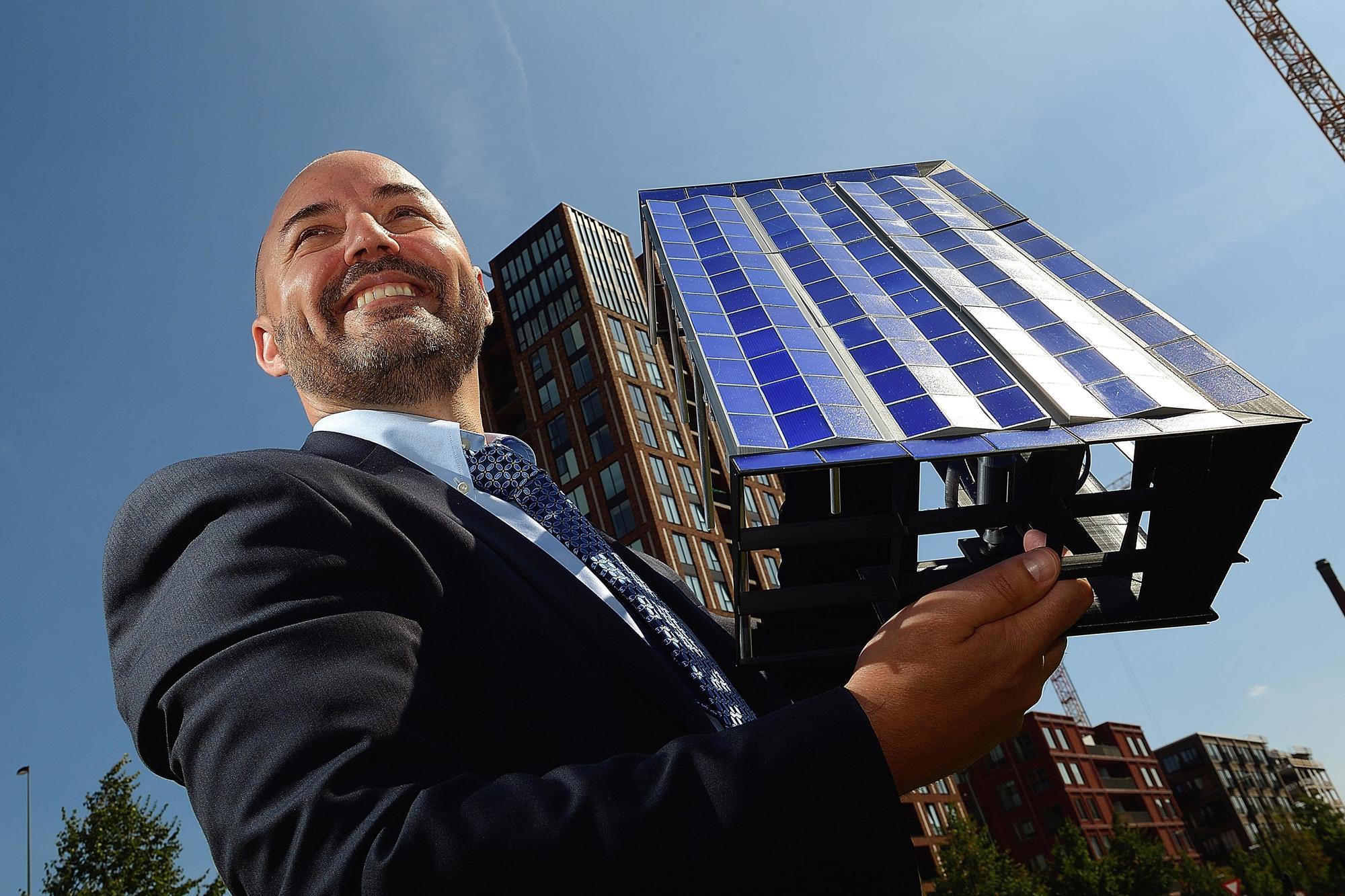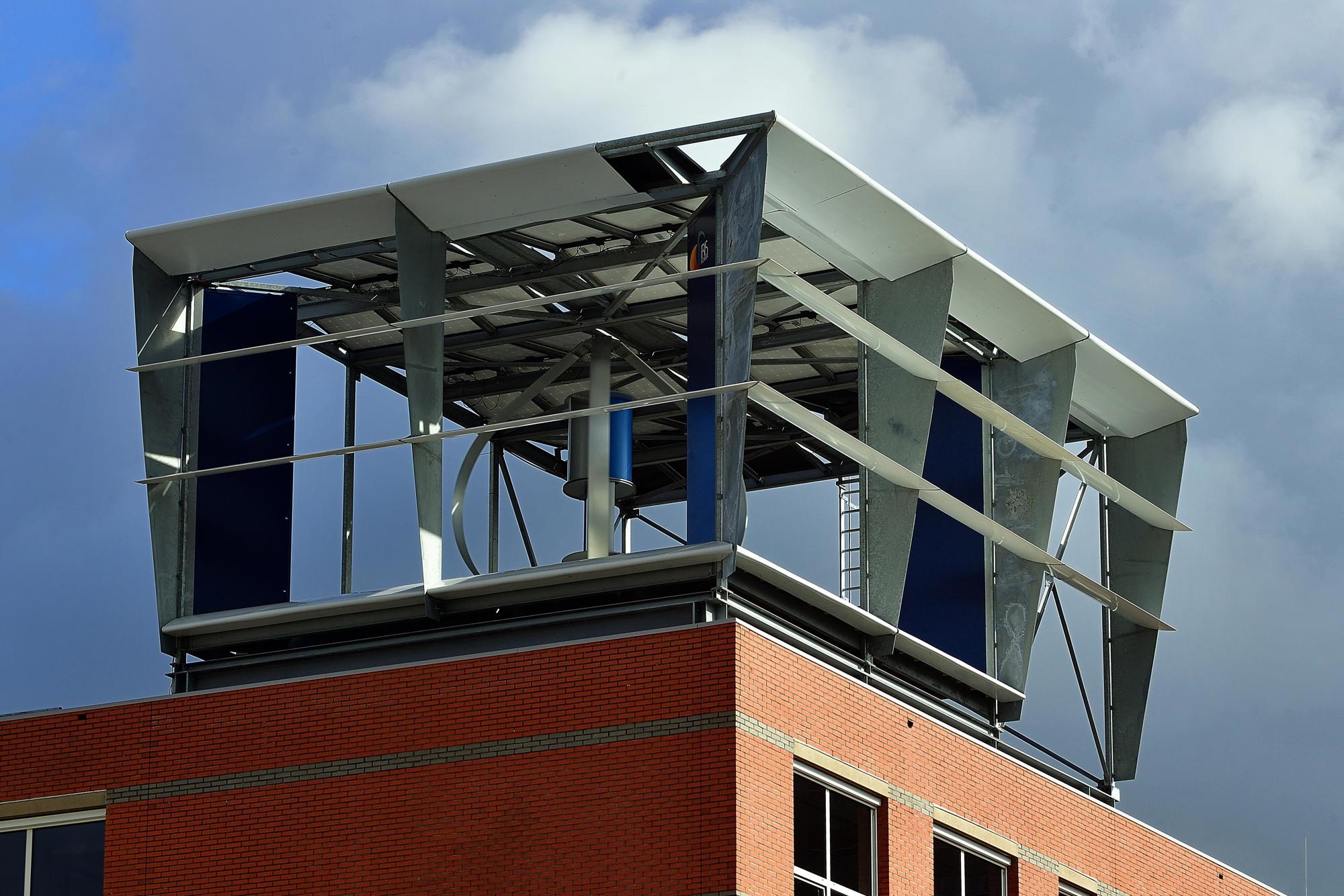How a rebellious secondary school pupil became a qualified engineer and developed a revolutionary innovative power generation system for high-rise buildings.
True innovators are always slightly rebellious. Not afraid to stray off the beaten track. Or even turn 180 degrees against the flow. Alexander Suma - the founder of IBIS Power and inventor of PowerNEST - still has something of a wayward teenager about him. You can just picture the scene as, with a mischievous look in his eyes, he talks about his time at school and how difficult he was for his teachers. So difficult, in fact, that they asked him whether he wouldn’t be better off elsewhere (i.e. politely told him to get lost) after the third year.
Three years of senior general secondary education (HAVO) was equivalent to a junior general secondary education certificate, meaning that he could apply for technical college. “I didn't like school”, says the man who went on to successfully complete two simultaneous Master's courses at Eindhoven University of Technology (TU/e), and then obtained a PhD in civil engineering from Miami University. His physics teacher at technical college saw the potential of this rebellious young man who consistently underachieved in the classroom simply because he “couldn’t be bothered”. “You are going to sit at the front of the class from now on and score As and Bs, or you and I again going to have problems”, he said. That made an impression. “He was a big guy,” Alexander says with a chuckle. “From that moment on, everything went smoothly and I started to enjoy school.”
“I always wanted to stand out from the crowd”, he concludes in retrospect. “To be more than just a number. That was also the case later at technical college and university." When his technical college graduation project attracted extensive media coverage in the newspapers, he realized two of the three things that would shape the rest of his career: that he found the combination of civil engineering and architecture extremely interesting. And that he had the skills and desire to make the world a better place. That Eureka moment motivated him to “go the extra mile” and enrol for a course at Eindhoven University of Technology. This was where his architecture lecturer, Monique Bakker, encouraged him to follow his passion and look to nature for solutions - the third ‘career-shaping factor’ that ultimately culminated in the award-winning PowerNEST: a sustainable power generator for high-rise buildings.
The PowerNEST harvests solar and wind energy. Natural elements that are abundant in Miami, the place where the idea for Alexander’s innovative energy system first came to him. Triggered by his angry landlady, who complained about him turning off the air conditioning when he went on holiday to the Netherlands. “Then it dawned on me that those things are always on in Florida. The houses also all have very small windows to keep as much sunlight out as possible. Even though you can put the sun and wind to good use.” This thought was still fresh in his mind when he had to complete an assignment for sustainable construction, one of his course subjects. He drew a few sketches during a boring lecture and the idea for the PowerNEST was born: a single integrated system for high-rise buildings, which includes a wind turbine and solar panels, and also takes the appearance of the building into account. Alexander: “The wind is always at its strongest between two tall buildings, because of the venturi effect. The PowerNEST makes optimal use of the intelligence of nature, with the addition of a turbine as my human contribution.”

In Alexander's eyes, this idea was no more than a completely logical solution; nothing to make a fuss about. So he was very surprised when Bart Chernow, the Vice Provost of Technology Advancement at the University of Miami with whom he shared his idea, immediately closed the door, called in a patent attorney and urged him to maintain strict secrecy. “According to Chernow, my idea was worth its weight in gold and I had to promise not to tell anybody about it, not even my own mother, in order to avoid jeopardising the patent application.” From that time on he received personal coaching and, just a few weeks later, had developed the idea enough to present it to a group of angel investors. A team of researchers was also put at his disposal. Alexander stayed at the University of Miami until he obtained his PhD. He had already seen how difficult it was for non-American colleagues to stay in the US, so when he received the offer of a job in the Netherlands and the European Union confirmed the availability of funding for developing the PowerNEST, the decision to return to Eindhoven required little soul-searching.
The work at the TU/e focused initially on product development and good progress was made. So good in fact that the team won several innovation grants, which were spent on building an initial prototype and funding the start of a new business. IBIS Power, named by Alexander after the ibis - a bird that intelligently uses wind currents for maximum efficiency, very much like his invention - opened its doors in November 2012. Various parties in the region, including Brainport Development, offered their support and the High Tech Campus provided office space.
But more was needed to turn the concept into a production-ready and affordable product that could operate at the highest possible efficiency. The activity really took off when a major European grant in 2015 made it possible for Alexander to expand his team to fifteen people. Just one year later, the very first unit was installed in the Eemshaven in Groningen. A great moment for the inventor: “Overwhelming - you suddenly find yourself standing in front of something that you thought of and sketched yourself, and then you think of all the people who helped you make it a success!”
Not everybody was a believer though. “The reactions to the PowerNEST varied a lot”, says Alexander in his current spacious office at IBIS Power's Strijp-S location. “People were either very enthusiastic, or they were convinced that the idea wouldn't work and even tried to prevent it from becoming a success.” When the results of the first complete system in Groningen exceeded all his expectations, he took the bold step of issuing a challenge on social media, inviting five critics to come and pick holes in his product. “They were there the next day. I gave them full access to all the models and even took part in an online presentation with them. They told me exactly what other scientists found hard to believe and what they needed to know to be convinced. After the presentation, I never heard anything from them again. Even so, that kind of criticism does get to you.”
After a year of testing in Groningen, a PowerNEST was installed in an urban environment – a block of flats in Utrecht - for the first time in 2017. Alexander: “Most people thought that the PowerNEST would only work effectively in coastal areas. We also thought that there might not be enough wind in a city environment at first. However, the test in Utrecht demonstrated that the PowerNEST was also effective in an unfavourable wind environment, generating more power than we calculated beforehand. Furthermore, local residents experienced no nuisance whatsoever - an important precondition for successful application in the built environment.”
A more recent success story is the unit that has been installed on the roof of the Zadkine Techniek College Rotterdam. In addition to supplying green electricity for the school building, the PowerNEST offers Zadkine students the opportunity of gaining practical experience with innovative energy technology.

Although Alexander very much enjoys running his business, selling his product has proved to be an uphill struggle. He attributes this inertia to the "immaturity" of the Dutch market for sustainable energy. “Many people still don’t accept that things have to change”, he says. “And even if they do, they are often unwilling to pay for the new technology.” The positive side is that he knows how to handle setbacks now. “I have become pretty resilient. I remain positive, continue to see the humorous side of life, and - when a strategy comes up against a brick wall - I simply look for new possibilities and opportunities in other areas.” The company has adapted its business model to make its offer more attractive for building owners. “We have adopted an ESCo (Energy Service Company) approach: we pay all the installation and maintenance costs and the residents pay us for their energy. A no-hassle solution for building owners.”
Alexander predicts strong growth in the near future. Projects are already ongoing in many parts of the world, in the United States and Dubai, for example, and on the islands of Aruba and Bonaire. And earlier this year PowerNEST was nominated as a finalist for the new National Icons awards; a competition which puts the spotlight on Dutch solutions for global issues in the field of health, energy, digitisation, circular materials and mobility. And the inventor has had a new idea. "My current baby, which I am absolutely passionate about, is another IBIS Power innovation. A wind and solar energy system for disaster areas: the PowerRESPONSE. It is actually a PowerNEST in a container. At the push of a button, the roof opens and the wind turbines and solar panels emerge, ready to generate immediate power for communication equipment, or for refrigerators for medicines." The first PowerRESPONSE is almost ready and will be shipped to Sint-Maarten in the near future if Alexander has anything to do with it. A better world is not only a sustainable world, it also needs to be safe first and foremost.
You can copy the full text of this story for free at the touch of a button